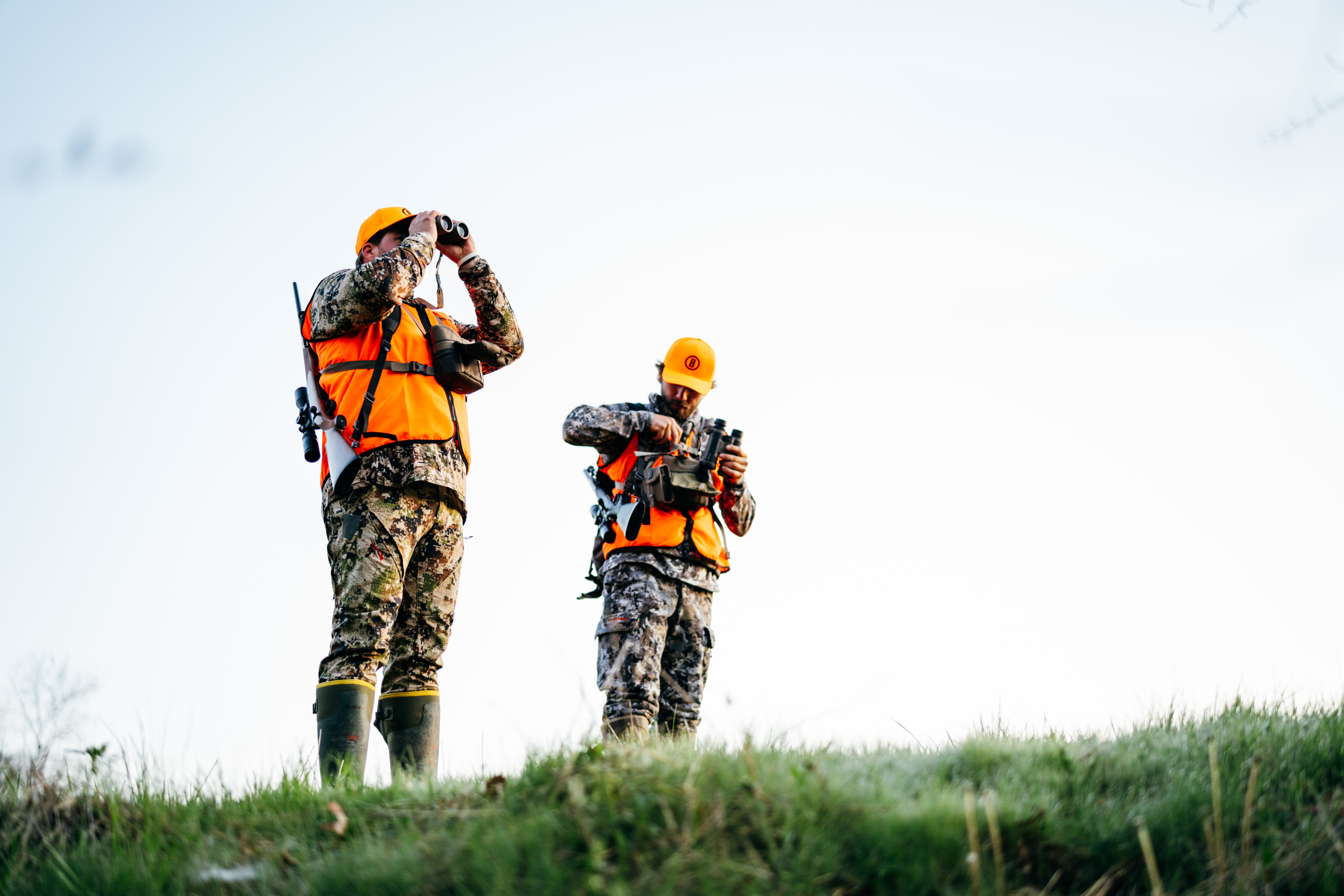
Binoculars FAQ
It is the minimum distance an object must be for it to be brought into focus.
Most Bushnell binoculars are fitted with rubber eyecups that can be twisted or rolled down for an improved field of view with glasses.
Individual eye strengths vary as do fingerprints. Please refer to the instructions below for your individual type of binocular.
CENTER FOCUS and INSTA-FOCUS
1. Adjust the interpupillary distance.
2. Set the 'diopter setting' (normally on the right lens) to zero and view a distant object.
3. Keep both eyes open at all times.
4. Using a lens cover or your hand, cover the objective (front) lens of the side with the diopter setting ring.
5. Using the focus adjustment, focus on the distant object being viewed.
6. Cover the other objective lens, then view the same object as above.
7. Using the diopter setting adjustment ring, focus on the same distant object as previous.
8. Your binocular should now be adjusted for your eyes. Make a note of the diopter for future use.
* Notes: Zoom Binoculars should be focused at the highest power possible. Perma-Focus® Binoculars do not require adjustment and use your eyes own ability to accommodate, most users have no difficulty with these models.
No. The distance between the eyes, called 'interpupillary distance', varies from person to person and your binocular must be adjusted accordingly.
1. Hold your binoculars in the normal viewing position.
2. Grasp each barrel firmly. Move the barrels closer together or further apart until you see a single circular field. Always re-set your binoculars to this position before using them.
The size of the objective lens on binoculars aids in the binoculars ability to gather light. The larger the lens the more light that is captured giving you a brighter image.
The first number is always going to be the magnification. This will tell you how much closer (8x) the subject will appear when viewing thru the binocular. The second number is the diameter of the objective lens in millimeters.
When handled with care, your binoculars will provide years of trouble-free service. Like any precision instrument, your binocular should be given reasonable protection.
1. If binoculars feature rubber "fold-down" eyecups, store them with the eyecups up. This avoids excessive stress and wears placed on the rubber eyecups in the down position. Twist-up and pop-up eyecups can be stored in either position.
2. Avoid banging and dropping.
3. Store in a cool, dry place. Avoid storing in your vehicle as temperature fluctuations and prolonged vibration can damage any optical instrument.
4. Never look directly at the sun with your binocular. It may be very harmful to your eyes.
5. Keep your lenses clean with the following instructions.
- Blow away any dust or debris on the lens (or use a soft lens brush).
- Remove dirt or fingerprints with a soft cotton cloth by rubbing it in a circular motion.
- Coarse cloth or unnecessary rubbing may scratch the lens surface causing permanent damage.
6. For more thorough cleaning, you may use photographic quality lens tissue and cleaner. Always apply the fluid to the paper or the cloth, not directly on the lens. The new microfiber cleaning cloths and "lens pens" are also highly recommended. They do not require cleaning fluid.
Since the prisms in the binoculars overlap closely, the objective lens and the ocular lens are aligned, and the binoculars will be slimmer, more streamlined, less bulky and more rugged than a Porro-Prism binocular.
